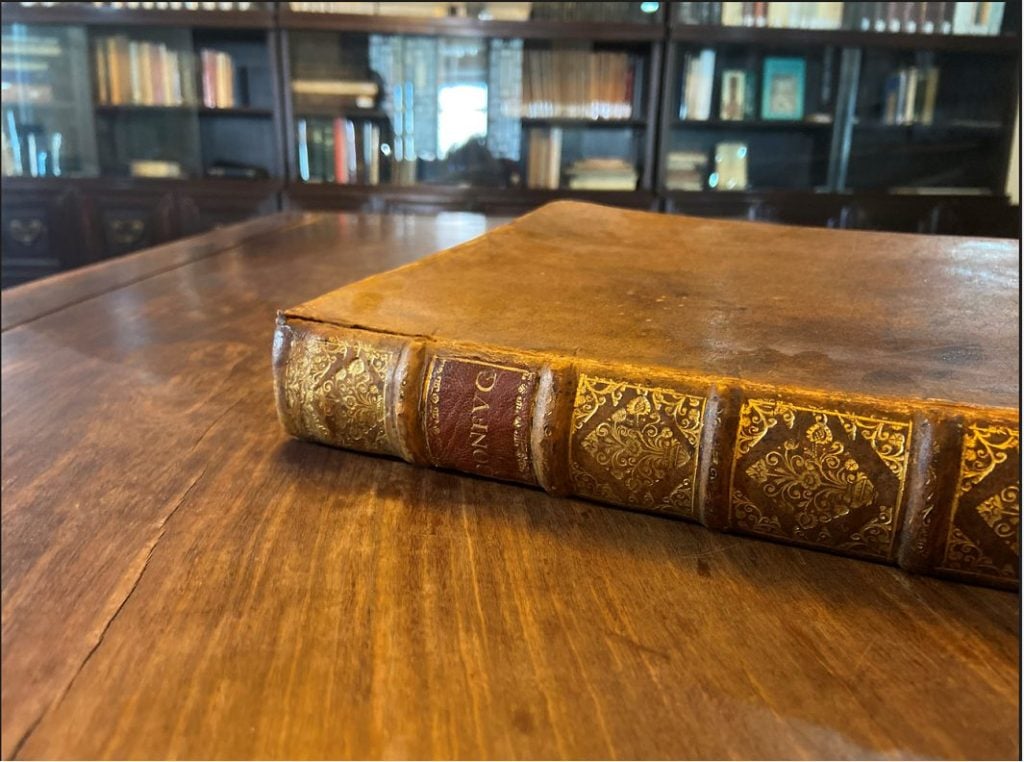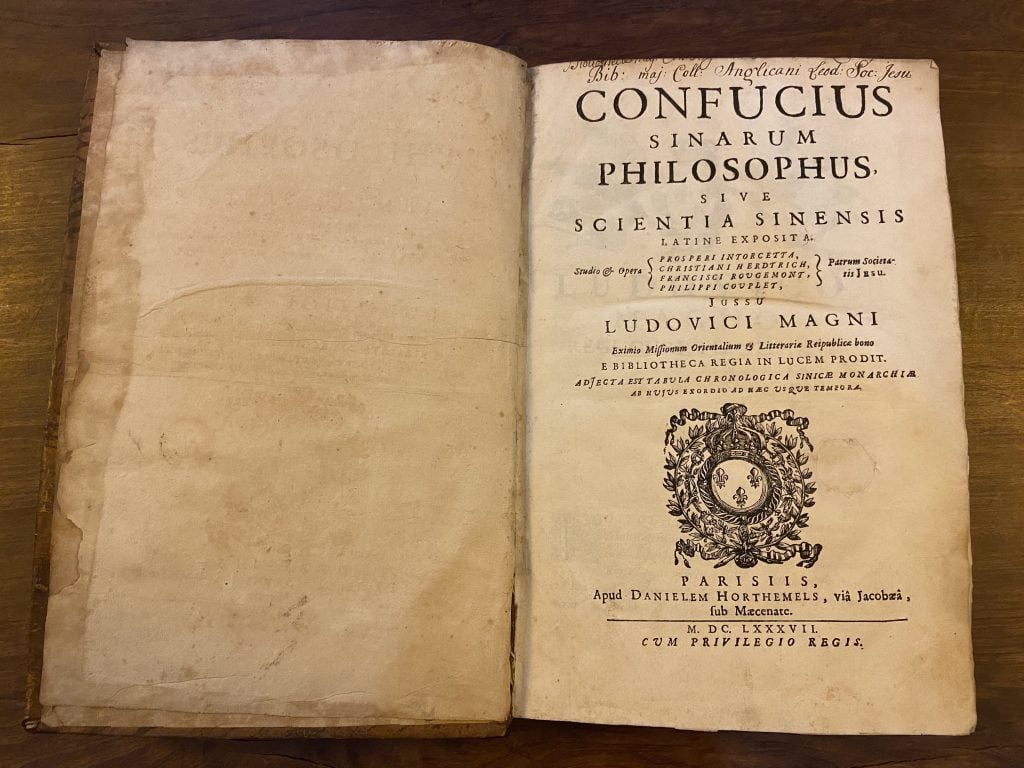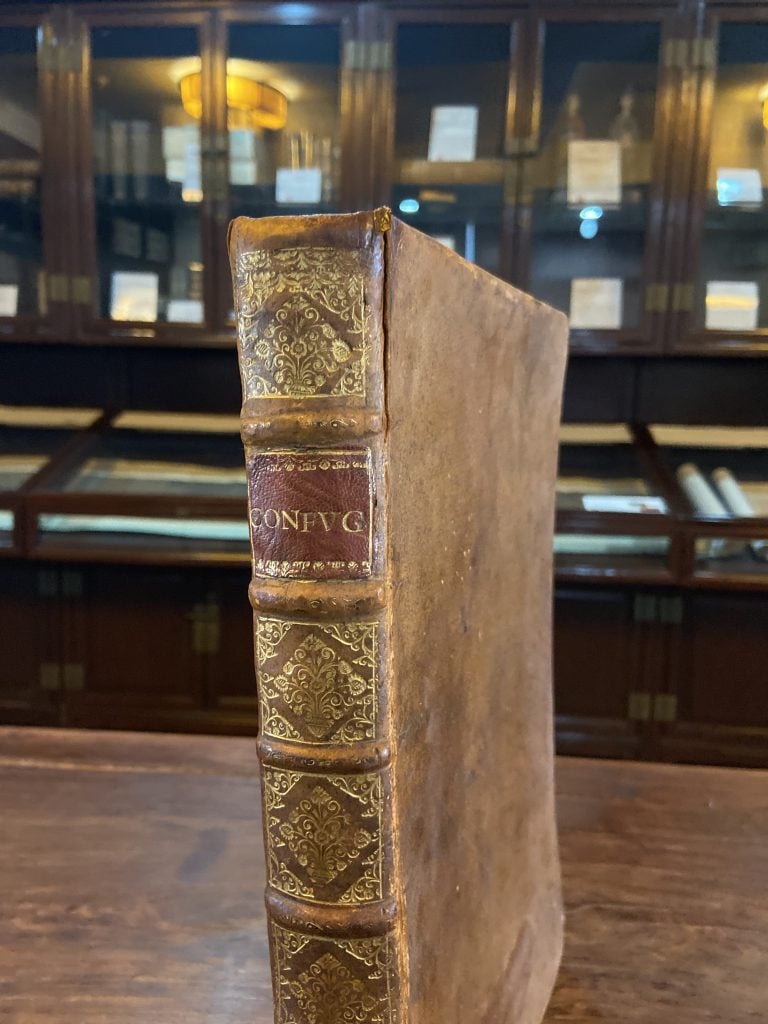
Library Tour – Rare Book on Confucius
Happy World Book Day! To celebrate, we’ll introduce you to more treasures in our Anton Library, the largest collection of English-language books about China, in China.
Last time we talked about TBC Library’s rich resources on rare book collections, special collections and significant donations. Specifically, the De Christiana expeditione apud Sinas Suscepta ab Societate Jesu (1616) from Trigault, and the Dell’Historia della China (1588) from Mendoza. Today, we’ll show you the first Confucian work in a western language published in Europe.
Confucius sinarum philosophus, sive scientia sinensis latine exposita, published in 1687, is the first edition print of the three major Confucian classics to be published together in any language other than Chinese. It’s published in Latin, making it the first recorded example of Confucian texts published in any European language. The Latin title translates to “Confucius the philosopher of China, or, the knowledge of China translated into Latin.”
The book comprises Latin translations of three Confucian classics: Da xue (大学, the Great Learning), Zhong yong (中庸, the Doctrine of the Mean), and Lun yu (论语, the Analects). They are three of the Four Books (四书), with the book by Meng Zi (孟子, Mencius) not included. The Four Books are Chinese classic texts illustrating the core value and belief systems in Confucianism. They were selected by Zhu Xi in the Song dynasty (960-1279) to serve as a general introduction to Confucian thought, and they were made the core of the official curriculum for the civil service examinations in the Ming and Qing dynasties.

The book is the product of the labors of four Jesuit priests who were missionaries in China: Philippe Couplet (1623-1693), Christian Herdtrich (1625-1684), Prospero Intorcetta (1625-1696) and Francis Rougemont (1624-1676). However, this book was more than just the intellectual collaboration of these four men but the culmination of translation work by Michel Ruggieri (1543-1607). Ruggieri, Ricci’s predecessor, was not only the first European translator of the Four Books of Confucianism, but also a founding father of the Jesuit China missions and co-author of the first European–Chinese dictionary. He has been described as the first European sinologist.
It was printed with royal privilege and dedicated to Louis the XIV., destined for the library of the Sun King, as a gift to his fine republic of letters. The dedication to Louis XIV was a planned action by the Jesuits in China, one in a long line of strategic planning (and indeed everywhere). They learned that they needed the help of influential people not only to fund their global efforts, but also to provide security during times of political turmoil. Dedicating this important intellectual work to Louis XIV was just one way of persuading the French king of the value of their endeavors and their desire for his continued support. It was also a risky gambit that paid off because Couplet, one of the editors, was also in charge of transporting the text to Europe, allowing him to present the work to the king himself.
This book constitutes the culmination of a century of Jesuit investigation into Confucianism and made this scholarship available to a European readership. It has been described as “one of the supreme achievements of Jesuit accommodative scholarship in China” (Mungello 1989). On June 8, 2011, one of these rare books was sold at£3,500 at Christie’s auction. But you can still find and appreciate it in our TBC’s library.
By Suemmer Luo, TBC Intern






